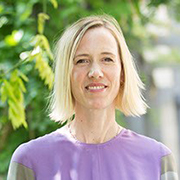A .gov website belongs to an official government organization in the United States.
A lock () or https:// means you've safely connected to the .gov website. Share sensitive information only on official, secure websites.

Poly- and perfluoroalkyl substances (PFAS) are a large chemical class containing thousands of anthropogenic chemicals. Exposures to PFAS have been associated with many adverse health outcomes such as cancer, immunotoxicity, and endocrine disruption. PFAS are used in diverse consumer products and by many industries and the chemical landscape has been shifting rapidly as legacy PFAS with known properties and adverse health effects are replaced by unidentified PFAS detected only as unidentified organofluorine in environmental samples. Drinking water for millions of Americans has been contaminated by PFAS but relatively less is known about other exposure pathways, including the importance of air deposition.This seminar will review present understanding of major sources of aqueous PFAS releases across the US and directions forward for understanding the atmospheric emissions and source receptor relationships.The relative importance of different exposure pathways will be discussed as well as key gaps in understanding.
Dr. Elsie Sunderland is a professor at Harvard University with affiliations in the School of Public Health and the Department of Earth and Planetary Sciences. She earned her B.S. from McGill University in Environmental Science, and her Ph.D. from Simor Fraser University in Environmental Toxicology. Prior to joining the faculty at Harvard, she held several positions at the U.S. E.P.A. working on regulatory impact assessments and models to inform policy decisions. Her research uses laboratory measurements, field measurements, modeling, and risk assessments to understand the environmental toxicology of PFAS, heavy metals, and mercury.
ALL Seminar attendees agree not to cite, quote, copy, or distribute material presented without the explicit written consent of the seminar presenter. Any opinions expressed in this seminar are those of the speaker alone and do not necessarily reflect the opinions of NOAA or CSL.